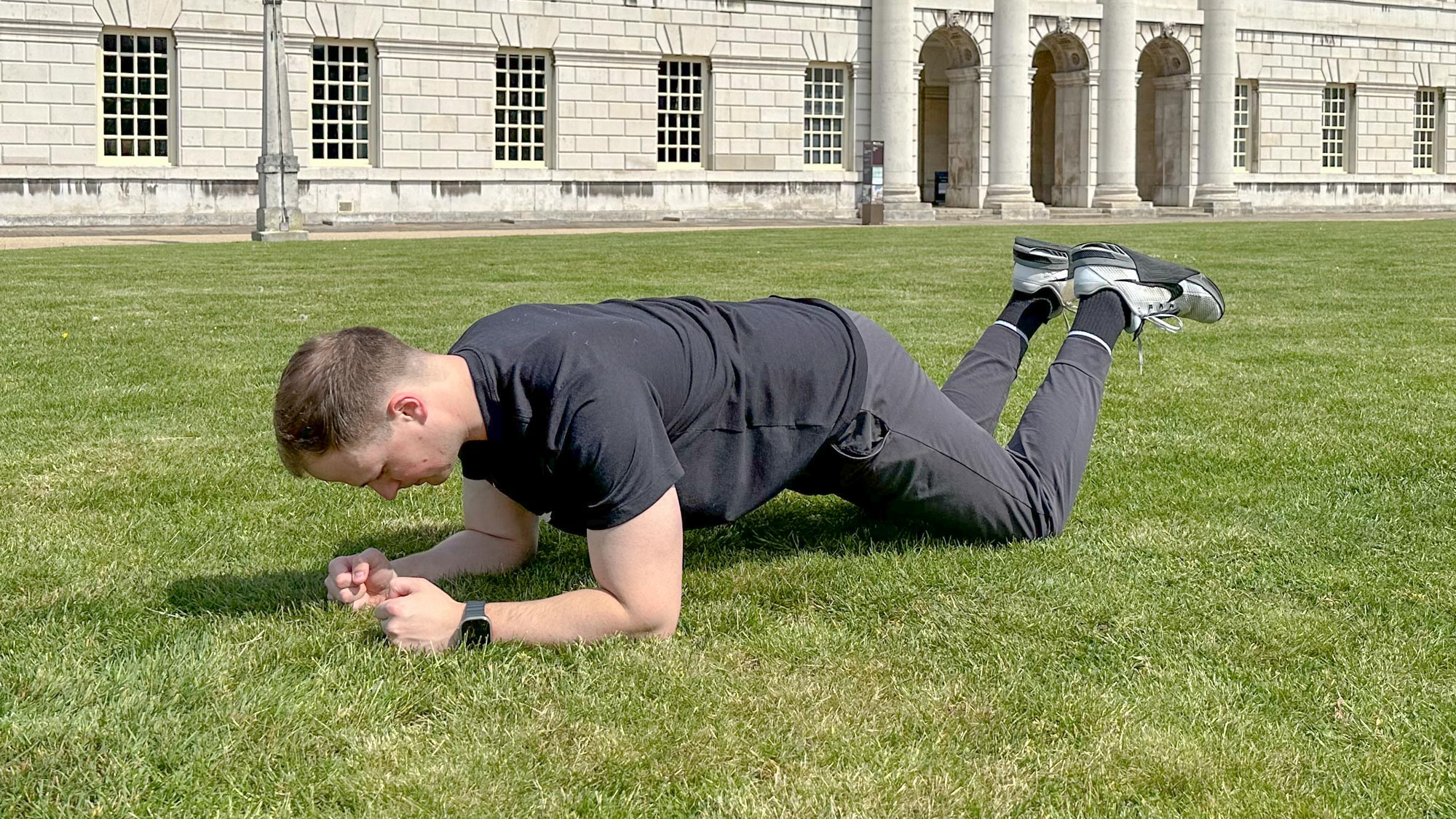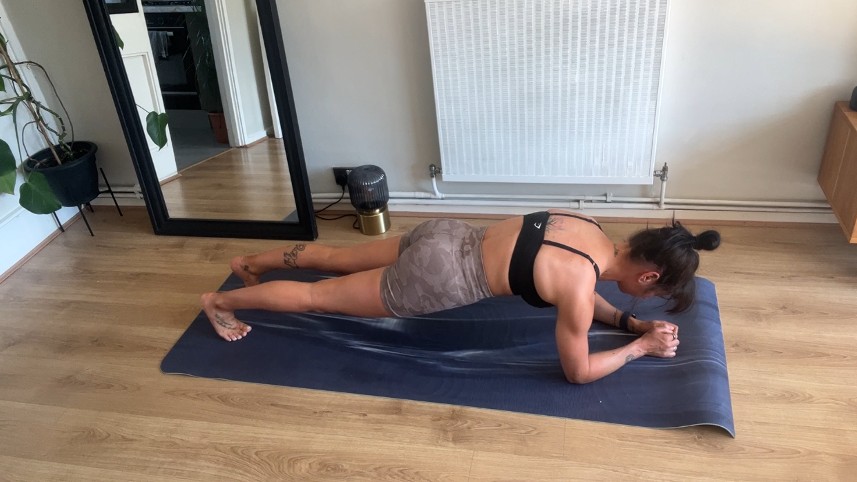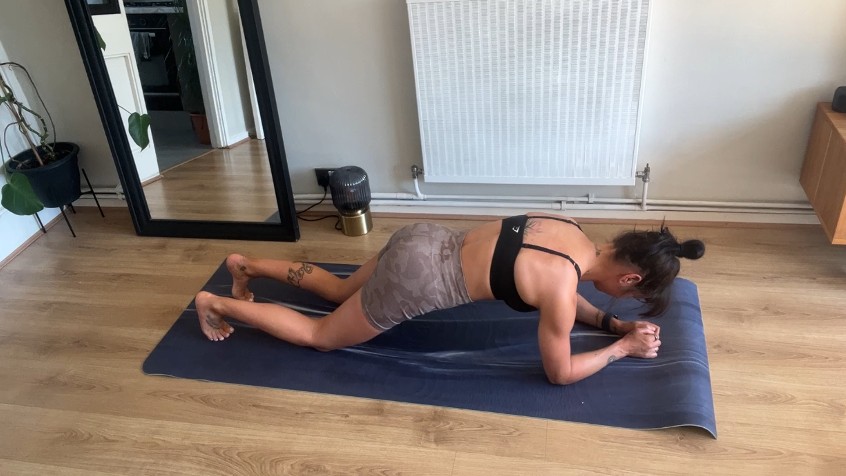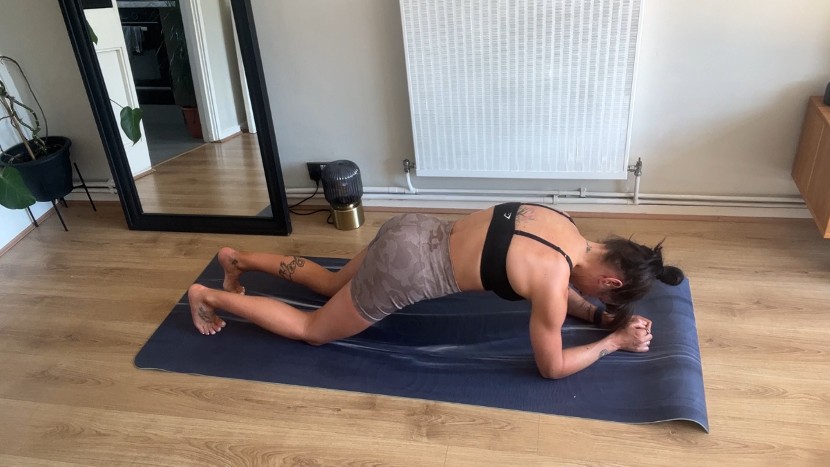
Bodyweight core exercises are some of my favorites because you can do them anywhere without gym equipment. This forearm plank variation is called the fishhook plank — and it’s a midsection melting ab move that I love to teach unsuspecting clients.
I recommend rolling out one of the best yoga mats before you try it because your elbows and knees will need support. To do the fishhook plank, you’ll move from a forearm plank position to your knees, practice a core contracting exercise, then lift your knees again to return to the forearm plank.
Below, I cover how to do the fishhook plank and its benefits for your core muscles.
How to do the forearm fishhook plank



- Start in a forearm plank position with your shoulders stacked over your elbows and bum aligned with your shoulders
- Squeeze your shoulders, glutes, quads and stomach to help engage your core
- Lift your kneecaps toward the ceiling
- With control, lower your knees to the mat, keeping your toes tucked
- Push through your shoulders, forearms, knees and toes
- Draw your stomach toward your spine. Avoid arching your lower back, excessively rounding your spine, or using your hip flexors to drive movement
- Pause as you create tension, then release, allowing your spine to be neutral
- Repeat, contracting, lifting, then relaxing for several rounds or until you can no longer maintain the position
- Lift your knees to return to the forearm plank.
To progress the exercise, keep your knees lifted an inch away from the floor throughout, or walk your forearms slightly forward. You can also move from the knees to the forearm plank between each rep.
Why I love the fishhook plank exercise
I’m always on the lookout for ways to spice up the plank exercise. First, this plank is considered a compound exercise, meaning it targets more than one muscle group. But that’s no surprise — every plank is technically compound.
Specifically, the fishhook plank targets the major muscle groups like your chest, shoulders, arms, glutes, quads and hamstrings, plus stabilizing muscles like your lower back, hips and core muscles.
The key to this exercise is subtle contraction — practicing it improves your mind-muscle connection, increases the intensity and helps switch on more muscle groups that might otherwise stay dormant. The goal is to focus on squeezing each muscle group together, contracting, relaxing, lifting and lowering.
To begin with, perform it from your knees, then progress to moving from forearm plank to the knees and back again, or hovering the knees above the mat throughout.
It reminds me of the RKC plank, which is a plank variation we love at Tom’s Guide; the RKC relies on small, subtle contractions to activate the muscles. You’ll form tight fists, then without moving, imagine you’re dragging your feet and elbows toward each other.
In this case, focus on creating a slightly hollow position with your body without rounding too much into your back and slightly pull your shoulder blades apart as you draw your belly button upward. As you release, focus on finding a neutral spine without dropping your hips or letting them take over at any time.
If you’re unfamiliar with the hollow position, I recommend learning the hollow hold to help you understand how your body should look and feel throughout.
Lastly, the fishhook plank is low impact because it taps into isometric contraction — contracting the muscles without them lengthening or shortening through a range of motion, as your quads and hamstrings would during a squat or your shoulders, triceps and pecs do during a push-up.
Moreover, planks target and strengthen the muscles responsible for stabilization, posture and balance, including the hips, glutes, lower back and core. These muscles help prevent injury, improve overall function, mobility and flexibility, help you move with better quality and perform better during workouts.
How to program forearm fishhook planks
Perform the exercise for 3 to 4 sets and 8 to 12 reps, or use a timer instead. Work for 30 seconds, take 10 to 20 seconds to rest and repeat for several rounds. As you get stronger, try 45 to 60 seconds of work, 10 to 15 seconds of rest and repeat.
If you have a pre-existing injury or health condition or are returning to exercise following pregnancy, consult a qualified medical professional before starting a new exercise program. Modify to your ability and stop if you experience pain.







